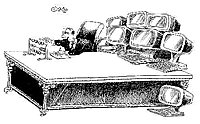This is the story of finally successfully re registering our good old car bought in the UK here in the province of Lugo, Galicia Spain
 One needs time (lots of it), nerves and a basic understanding of Spanish. It is possible to make this painless by using a “gestor”. A gestor here in Spain is a sort of middle man – between you and bureaucracy.
One needs time (lots of it), nerves and a basic understanding of Spanish. It is possible to make this painless by using a “gestor”. A gestor here in Spain is a sort of middle man – between you and bureaucracy.
We like to hear and experience everything right at the coal face – so obstinate as ever I decided we are going to try this without a “gestor†or other such ilk.
The biggest “bug bear” is that one has to go to the Xunta and Traffico in Lugo. Rematriculation is too complicated for the local offices.
So here is the short form with the long winded explanation backed up by experience at the end.Â
You need:
The original matriculation which also contains the owners details.
The original purchase / invoice showing VAT if not a private sale.
Passport
Registration in Spain (NIE – national identificacion estranjero) which is the registration at the local police station. We always have the original and at least one copy with us.
A NIF (national identificacion fiscal).
Have a certificado de residencia from the local council (required to get NIF).
Get new head lights (for right side drive) fitted to the car. Although it is possible to adjust the lights to pass the ITV (Spanish MOT) it’s not allowed to rematriculate a car with a wrong set of headlights.
Local (Spanish) insurance.
Important:
Now you can only register a car in Spain when your primary residency is here.
The car is insured, regardless who drives it. So the owners age determines the premium.
Its also a good idea when borrowing a Spanish car to make certain it is insured.
Road tax is paid at the local council, once a year or proportional if one “jumps” in.
Tax office in Lugo is open till about 1pm. Traffico in Lugo is open till 1:30pm.
ITV till 4pm and later (might differ locally).
Processes
1. Get a reduced basic matriculation (approx. 127 Euro incl. IVA)
2. Go to the local ITV and get the car passed (incl. head lamps). Paperwork will take a week. A re-pass because of a fault is free within 15 days. The ITV for rematriculation costs about 70 Euros.
Don’t forget to detach the export bit and send it to the UK to be released of road tax.
3. Go to the council and get a certificate of residency. This is a one off paper not like the certificado de registration (NIE) which can be copied).
4. Pay road tax (proportion) at local council.
5. Xunta de Galicia in Lugo – Tax office – Get a NIF (form you need to buy is .60Euro). Its done there and than, allow 2 hours.
6. Traffico in Lugo. Pay for rematriculation (about 67 Euros). Get a number and queue with all your paperwork.
7. After a week go to Traffico in Lugo again to obtain your matriculation.
8. The local garage will make and fix the plates (approx. 16 Euros).
9. On-line or via a local insurance broker get insurance. A 5 seater is classed as a small van and expect to pay 300 Euros or if you have 4 seater it may only be 200 Euros.
 So here is the full story of our rematriculation.
So here is the full story of our rematriculation.
We started with the local hacienda (tax office in Monforte). The administrator was nice and told us once we are registered residents here we have 30 days and we have to import the car at the border. Rubbish! This is Europe – we went to Vigo port to the aduana and a nice chap told us, all this is not needed as we paid VAT in the UK and this is Europe. But we got a little note from him with a stamp (stamps are always important here) that if anyone thinks differently they should call him.
We than enlisted the help of a local garage. Through this we got in contact with a qualified and accredited engineer who came out looked at the car, took a copy of original matriculation, took photos of the car and within a week produced the reduced basics for matriculation. In Spain the matriculation is an A5 sheet with the car details, a unique number and in the end a matriculation number. Which is the number on your car plate. This costs between 120 – 170 Euros.
With this we drove over to the ITV. They were very nice but insisted that we need “Continental” headlamps.
After the guy in the garage got of his heart attack, charged an arm and a leg we had new lights fitted.
Back to the ITV. They where happy and told us in a week we can pick up the papers.
We visited the local council and paid a bit of road tax and picked up a certificado de residencia.
A nice document, but the only guy who can sign it maybe out of town for days.
This by the way is a “one off” document, so no copies are accepted and it is a good choice to always have at least one.
A couple of weeks later we made it to Lugo and went to Traffico. They looked at the papers and decided as I was the owner everything had to be in my name. They refused to acknowledge that I’ve just sold the car to my wife and anyway we hadn’t had a NIF.
 The Xunta offices with the office for national tax and other problems is in central Lugo about 20 Minutes on foot away. We found a nice administrator who send us to buy a form and than send us to another counter where we became fiscally acknowledged and my NIE number is now a NIF number. It takes lots of stamps, serious looks and the usual wad of forms before it is all entered into a computer and a printer spews out some nice stickers and jet another form.
The Xunta offices with the office for national tax and other problems is in central Lugo about 20 Minutes on foot away. We found a nice administrator who send us to buy a form and than send us to another counter where we became fiscally acknowledged and my NIE number is now a NIF number. It takes lots of stamps, serious looks and the usual wad of forms before it is all entered into a computer and a printer spews out some nice stickers and jet another form.
As it was past 1:30pm we drove for a wet lunch into the countryside.
Again a couple of weeks later we had sufficiently recovered from the bureaucracy to have another go and went to Traffico in Lugo again. As experts in the queueing system there, we took one number for information to get a payment form and one number for the admin / matriculation queue.
We paid our dues, about 67 Euros, queued and surprise, surprise our papers were accepted . We received a receipt and were told to come back in a couple of days to pick up the matriculation. They don’t send it and its not their problem that one happens to live 2 hours away. But anyone in possesion of the receipt can pick up the papers at the end.
We grumbled for a week but ran out of excuses not to go and finally on a glorious sunshine filled day we had our MATRICULATION.
One of the quirks of the system is that you can drive a car with valid number plates but no insurance. It’s illegal but hard to check. So no wonder it took us a further 10 days to get round having actual Spanish plates fixed and a further week to find the time to go into a very friendly local insurance office and get cover.
Now the car is Spanish, insured and still has the steering wheel on the right. All I need now is a second steering wheel. I just look forward to the faces when they overtake and two people are steering the car…….
If you found the above sufficient and helpful why not donate a pound or a Euro so we can keep sharing our experiences.
The Expats

One comment on “Import a car UK to Galicia (Spain) – Rematriculation – Bureaucracy goes wild”
Comments are closed.